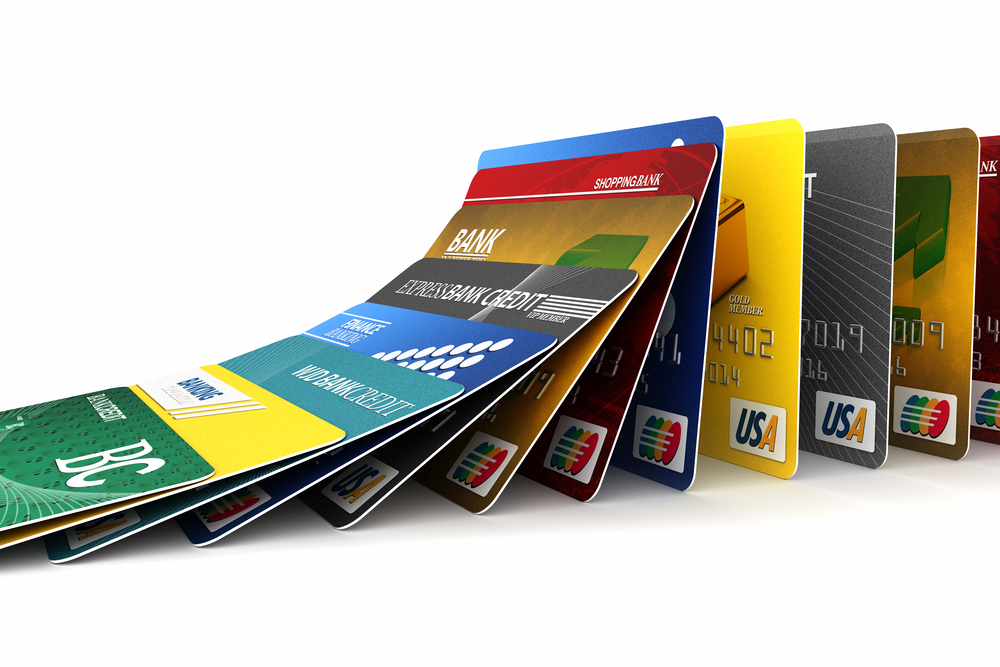Let’s Break it Down: Installment Loans vs. Revolving Credit
When you hear the word, “Debt,” do you automatically think, bad? Stop right there! While bad debt is a real thing, debt can also be a very important and helpful tool. Good debt helps you pay for an education, a new home, or a car. It’s when debt is used recklessly that it can cause major problems – leaving you broke, your credit score bruised, and your stress levels through the roof.

Luckily, there are lots of options when it comes to borrowing money – or debt. Choosing the right credit tool for a particular situation and your own financial needs is key to staying on top of your finances and keeping debt under control.
The credit options you have can essentially be broken down into two categories:Installment Loans and Revolving Credit.
Installment Loans
You’ll come across installment loans when purchasing big ticket items like a house or a car. You take out a loan in a specified amount and select a repayment period – so you know exactly what your monthly payment will be and how long it will take until you pay the loan off (term of the loan.) Installment loans, then, are easily incorporated into your budget. In addition, they often offer competitive rates – often 5 to 7 percent.
When it comes time to pay an installment loan back, you’re mostly paying back on interest. Over the course of time, you’ll begin actually paying on the principal loan amount. (This is called amortization.)
There are two types of installment loans:
Secured Loans: These loans are tied to some sort of collateral – such as a car, boat or home – that the financial institution – or lender – holds the power to confiscate and sell should you not be able to pay back your loan. Secured loans typically carry lower interest rates than unsecured loans.
Unsecured Loans: These are riskier to the lender, and as a result, they carry a higher interest rate. Unsecured loans hinge only on your good reputation – which includes but isn’t limited to: your credit score, payment history, character, and job status.
Revolving Credit
Forms of credit that are dubbed “revolving” include credit cards and lines of credit. In short, with revolving credit, you’re given a set amount of money you can borrow (“credit limit”) and as you pay back that money, your credit limit “revolves” back up to what it was originally set at. You can keep dipping into your pool of credit time and again, so long as you’re paying the money back.
With that flexibility, though, comes a much higher price. Rates for revolving credit options vary greatly – and depend heavily on your credit and payment history. You can typically expect interest rates between 10 and 20 percent. Don’t pay your bill on time? Card issuers have the right to raise your rate as a penalty.
Revolving credit options are a popular choice today, because they’re so easily accessible (think about it – how many card offers have you gotten in the mail in the last month?) Even those with a not-so-stellar credit history can get approved. Plus, their low required payments are enticing. This proves problematic though, and makes it easier for people to fall into bad debt, because you’re typically only paying on interest – not the principal – so you could be paying off credit cards for years, and years, and years… It takes a lot of self-discipline to make more than the required payment so you can stay on top of your credit card payments. You might even have to get in touch with your financial institution or card issuer to request that your minimum monthly payments be increased, since the default is usually so low.
How to Decide Which Suits You
Match Credit Term to the Life of the Item
The more expensive and long-lived the item is (think: house, car), the more sense it makes to take out an installment loan.
If your purchase is less costly and less long-lived (think: new clothes, a big grocery purchase), the more sense it makes to use revolving credit – like a credit card – that you can pay back quickly.
Be Careful About “Special Offers”
It’s more often than not that, during checkout at a retail establishment, we’re asked, “Would you like to save 30% by opening a credit card with us?” Sure, that initial discount is amazing, but what they don’t tell you is you’ll be hit with a 20% interest rate from there on out. You’re likely better off sticking to the card you’ve already got and seeking out alternative discounts – coupons, mobile offers, or free membership deals.
Leverage Your Banking Relationship
Visit your current financial institution where you already have accounts open to see what credit options they have to offer you. Many institutions will actually waive fees or reduce your interest rate for strengthening your relationship with them.
Be Prepared
Do your homework. Plan your purchases ahead of time. Before you make a major purchase – like a new car, a new living room set, or a just-released computer system – educate yourself on your financial options. Get familiar with the rates and terms for lines of credit and loans offered by your financial institution and, when possible, get pre-approved before you even go shopping.
Choosing the best credit option – revolving credit or an installment loan – for your situation will ensure that you get the best deal and help you to stay on top of your payments so you can live a life with good, healthy debt, rather than drowning in bad debt.
Questions about what you’ve read or how to determine your best option? We’d love to help! Get in touch with 3Rivers today.
